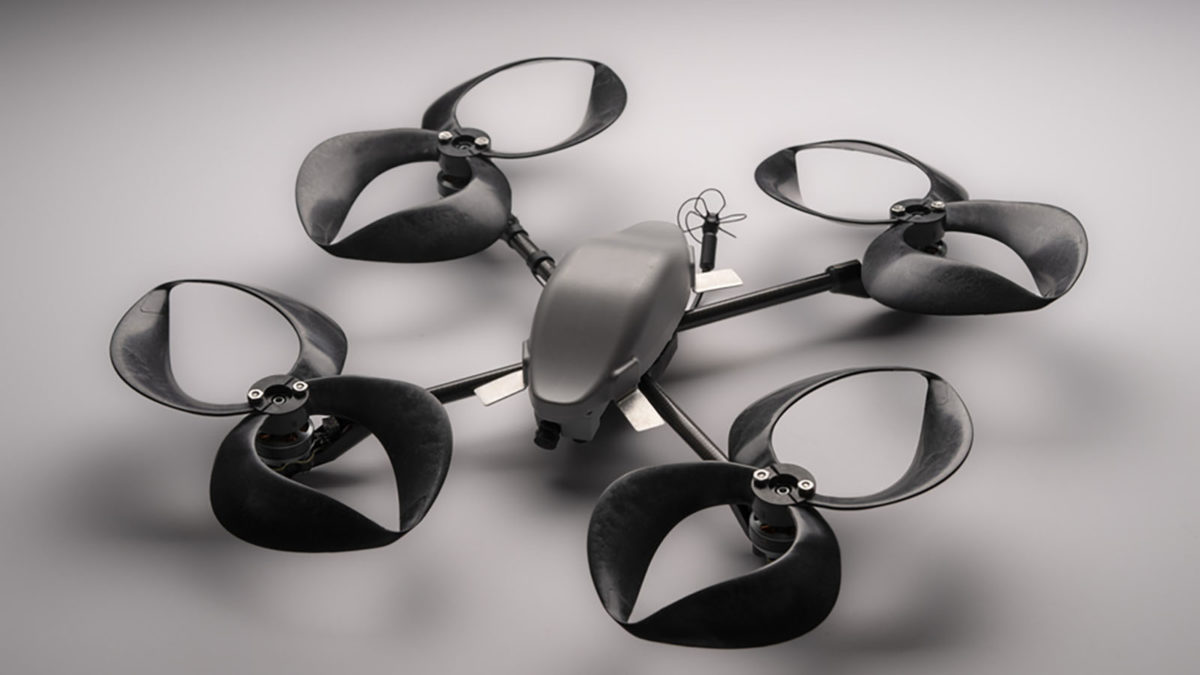Research into propellerless flight spawns a different idea
By Paul Brinkmann|March 2023
Four years ago, researcher Thomas Sebastian of MIT was given what seemed like a straightforward assignment as part of a NASA-funded project to test the idea of propelling a small aircraft with an electric field along its wing that would accelerate ions.
Sebastian needed to find out how much quieter electroaerodynamic thrust, also known as ionic wind, would be compared to propulsion with propellers. Comparing ionic wind to loud, conventional props seemed like an unfair comparison, so Sebastian began looking for quiet propeller designs. He had seen old ring-shaped wing concepts. “So I wondered, ‘What would happen if you adopted a shape like that as a propeller?’”
He 3D-printed propellers whose blade tips met to form a ring, tested them in the lab and then indoors on drones, tilted to a rotor configuration. Interest in the design has exploded in recent months, after R&D World magazine presented MIT Lincoln Laboratory with an R&D 100 Award in August and Lincoln Lab described the technology online in an “Innovation Highlight” document.
Behind the scenes, engineers and designers are working to determine which aircraft such propellers might be right for. Not everyone is sold on the applicability for their needs.
“I’ve looked at toroidal propellers previously — they are a novelty, but in terms of being either more efficient or quieter, it all depends what you are comparing against and what the propeller is designed to achieve,” says Mark Moore, CEO of Whisper Aero, the Tennessee propulsion developer, in an email.
Whisper is targeting noise by going in a “very different direction” than propellers, “re-inventing the best way to turn electrons into thrust,” specifically with the needs of the U.S. Department of Defense in mind, Moore adds.
Sebastian nevertheless believes that the technology could be potentially groundbreaking for some applications. “There’s lots of interest in the hobbyist community,” he says, referring to consumers who buy drones and alter them. He’s also fielded inquiries from engineers and a few commercial aircraft companies.
There’s some indication that these propellers may be safer, based on what Sebastian calls a “hot dog test.” Lab workers watched how a conventional propeller and a toroidal propeller impacted hot dogs when striking them. “The conventional propeller was cutting into the hot dog, but the toroidal propeller just smacked it out of the way, which we saw as, like, maybe it’s safer,” he says.
But Sebastian cautions that there might be a diameter limit for toroidal propellers for aviation because they have more mass on the outer edge than traditional pointed blade designs. “I suspect the largest you could go with efficiency would be about 18 inches [45 centimeters], but that’s just me guessing,” he says. In the lab, the largest he tested was about 20 centimeters.
“You probably can’t just pop off your propellers and pop these on because they are heavier, which is probably going to confuse the heck out of the autopilot features,” he says.
As for what’s next, he is working with MIT’s Technology Licensing Office to determine that. “We plan to produce a public briefing that will explain more details.”








